Reebok Floatride Energy Grow
Two-minute review
While its eco-friendly credentials are welcome, this running shoe’s real selling point is its versatility. It’s a carefully designed neutral shoe with a hefty dose of retro cool, and something you’ll reach for day after day.
The FloatRide Energy Grow uses at least 50% plant-based materials, but you won’t be aware of that at all when you’re running. This is a surprisingly lightweight neutral road shoe that fares well in both wet and dry conditions. It’s more flexible than many others, though – laterally and particularly medially – which some runners may find gives insufficient support.
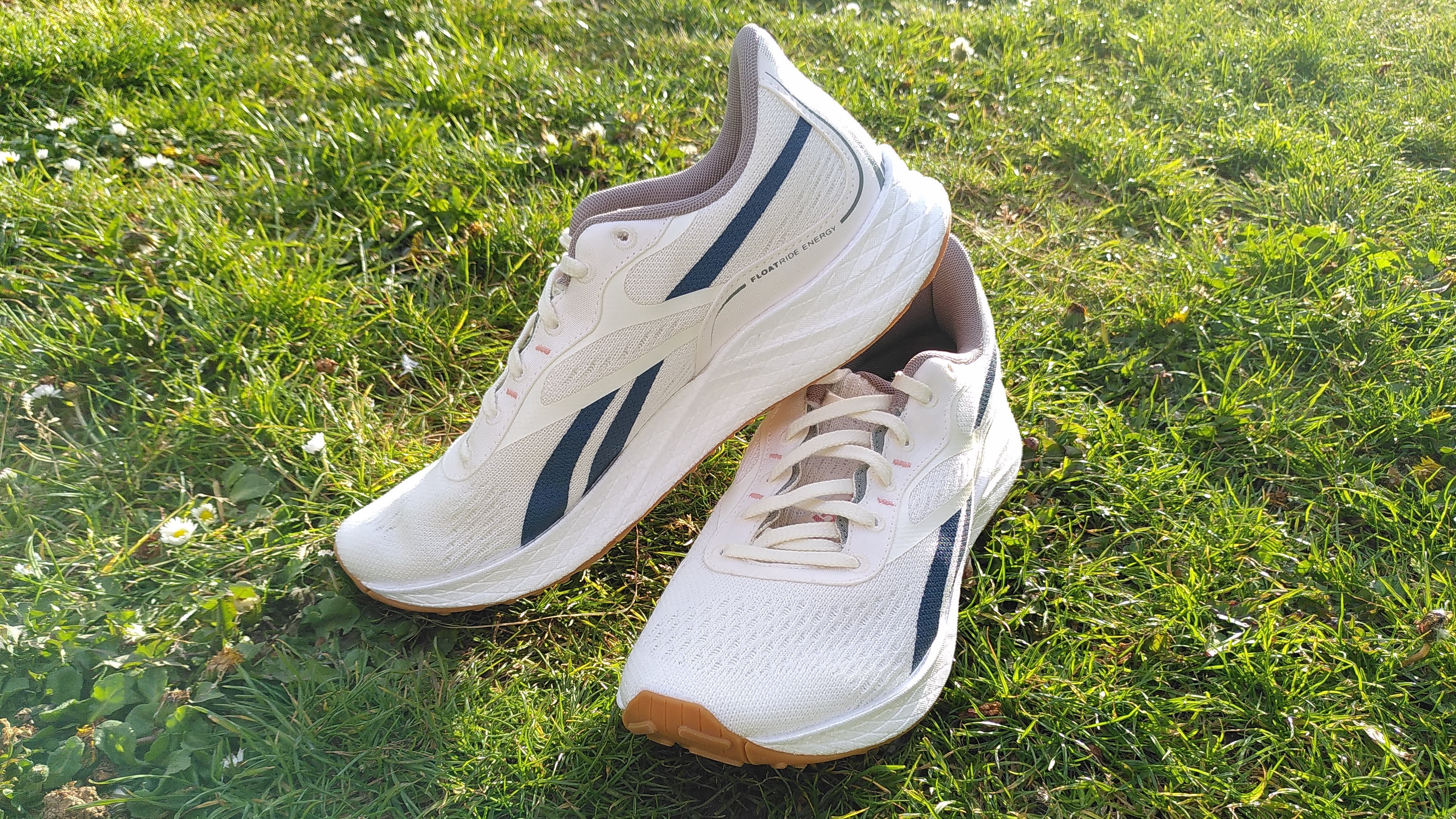
We were impressed by its versatility though, and if you prefer a softer neutral shoe. Its old school looks are also a welcome break from the neon-hued norm, making it practical for everyday errands as well as your regular training runs.
We do, however, have a few concerns about the durability of its construction, having noticed some fraying on the inner edge of the tongue during our testing. The most environmentally friendly running shoe is the one you wear for as long as possible, so this is something to be aware of when choosing your next pair.
Design
The main thing that sets the Reebok Floatride Energy Grow apart is the choice of materials. While brands like Allbirds have made sustainability their whole identity from the beginning, we’re starting to see the bigger names joining in by cutting down their use of virgin plastics as well.
The Salomon Index.01, for example, is built from just two materials: polyurethane foam and recycled polyester. Once you’ve run it into the ground, you can return it to Salomon for recycling (the cost of which is included in the initial price).
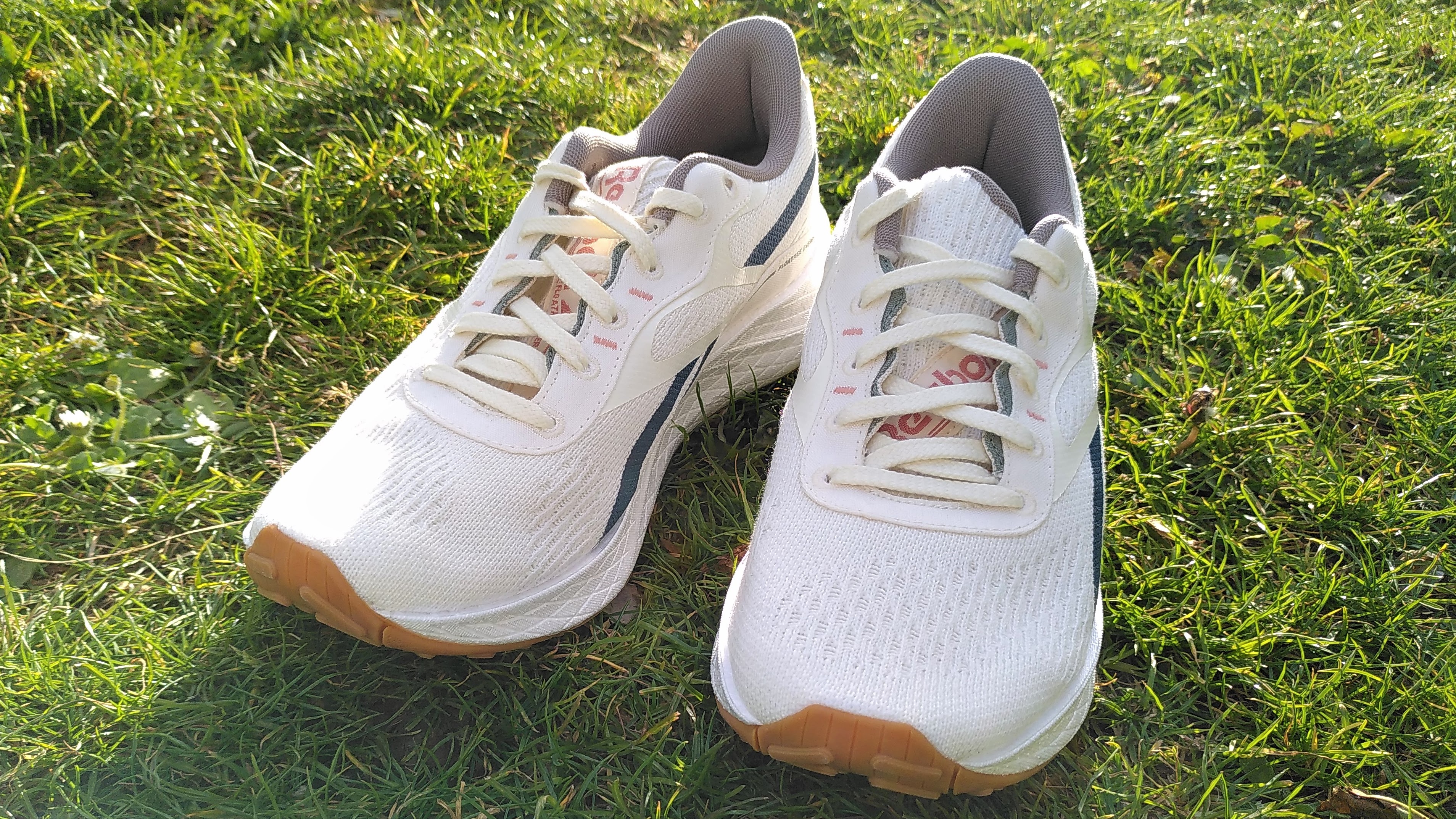
Asics has also been getting in on the act, with a limited edition line of running shoes made using plastics from waste clothing gathered in Japan, and dyed using a method that uses a fraction of the water of conventional techniques.
The Floatride Energy Grow takes a different approach, with an upper made using eucalyptus bark, and foam made using castor beans (much like the On Cyclon released earlier in 2021, which is only available by subscription).
The Floatride Energy Grow doesn’t shout about its sustainable credentials, though; instead, it has an old-school design in shades of off-white, blue and gray, with a gum outsole. This, combined with its understated shape (no huge eyelets or home-spun elements here) means it works equally well for running and everyday wear. It’s the only shoe we’ve been complimented on by a non-runner.
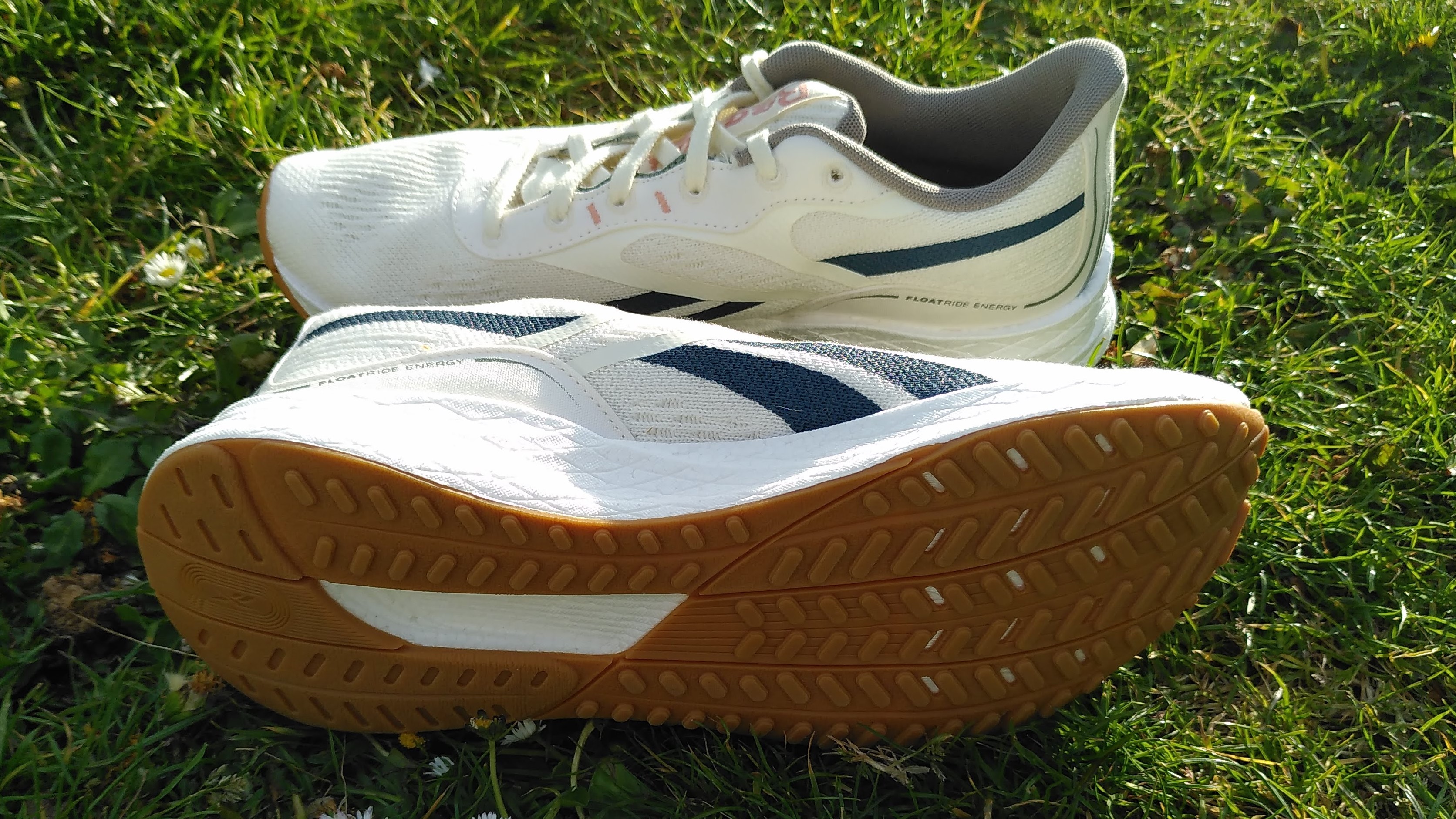
We were expecting a shoe made from non-traditional materials to be heavier than average (as is the case with the Allbirds Tree Dasher), but despite being 50% veg-based, the Reebok Floatride Energy Grow surprised us. The men’s shoe weighs just 229g, which although not as light as a racing shoe, is impressive for an everyday training option.
It’s also one of the most affordable ‘green’ running shoes around, costing a relatively modest $120 / £90 / AU$180.
Performance
We found that the Reebok Floatride Energy Grow performs admirably in almost all situations. As a neutral shoe with no stiff plate underfoot and a moderate but not excessive degree of cushioning, it feels comfortable for long, slow runs, as well as everyday walking, never feeling unstable at lower speeds. The castor bean foam provides plenty of shock absorption, but never feels bouncy.
The sole is relatively flexible, with a decent amount of flex particularly towards the toe, and its segmented design means twisting motions are possible as well. That'll suit runners with a neutral style just fine, but if you’re in need of stability, this won’t be your number one choice,
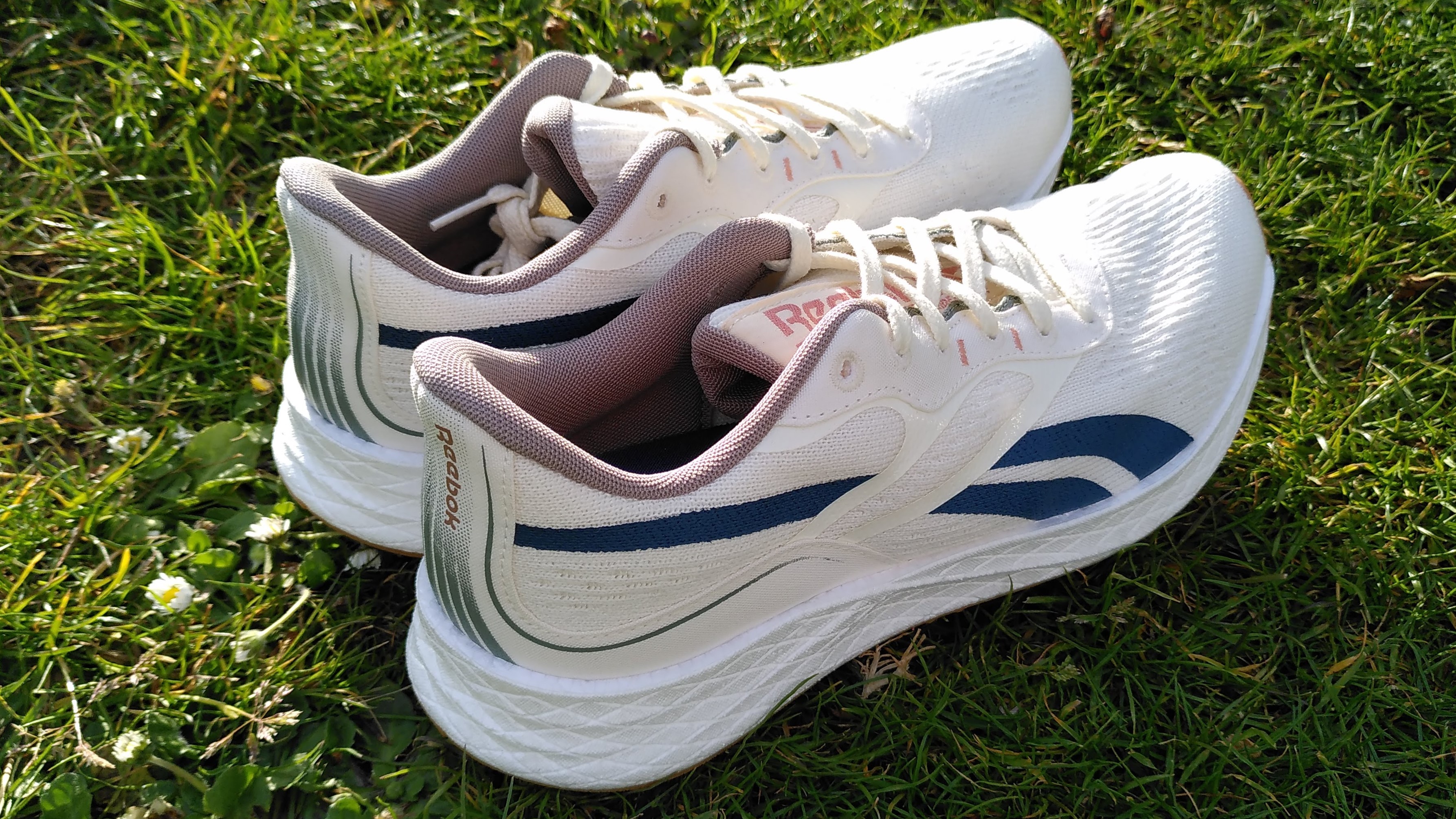
This is strictly a road shoe (not least due to that off-white upper), but the gum outsole still has a reasonable amount of grip, and we felt sure-footed enough in wet conditions provided we stuck to hard surfaces.
The eucalyptus woven upper has two distinct layers. It’s relatively thick compared to many modern 3D-printed mesh shoes, yet surprisingly breathable, and seemingly contributes very little to the shoe’s weight,
The tongue is a little unusual, with minimal padding and a design that’s attached to the inside of the shoe with a woven gusset. This never proved uncomfortable, but you may sometimes catch your toes on it when slipping the shoe on if you're not careful. We’ve also noticed some fraying occurring where the tongue meets the gusset, which may become an issue further down the line. This appears to be due to the edge of the tongue not being serged on the inside, leaving a raw edge (possibly to save weight).
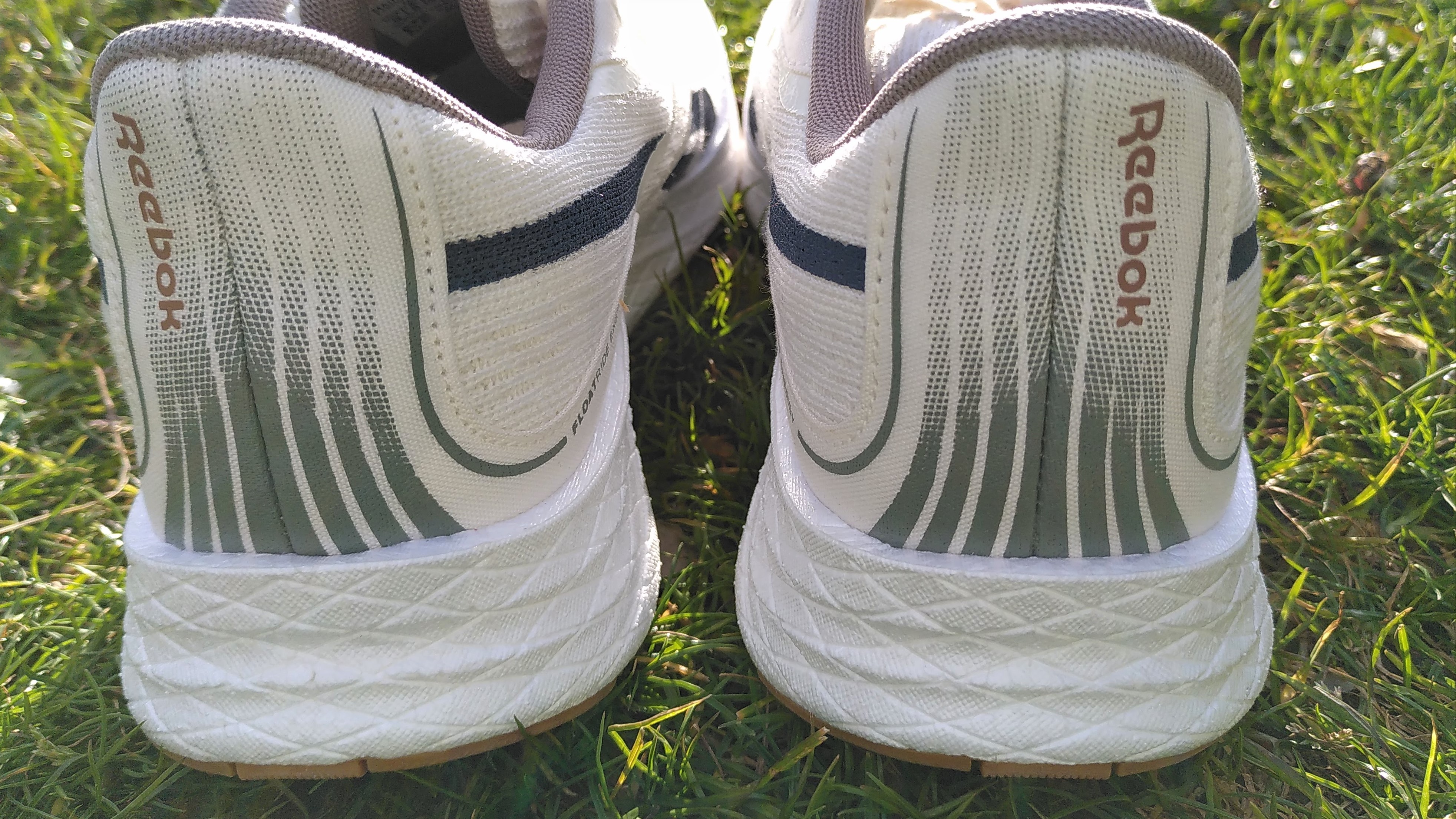
It’s also worth noting that the shoe may come up a little large; our review pair were a UK size 8 rather than our usual 9, but fitted comfortably – a stroke of luck for us, but something to bear in mind when ordering.
Overall, though, if you have a neutral gait and aren't too hard on your footwear, the Reebok Floatride Energy Grow is definitely worth your consideration; comfortable, versatile, and eye-catching for all the right reasons.
Buy it if
You want a multitasker
The Reebok Floatride Energy Grow transitions easily between workouts and the street, looking equally at home with Lycra or denim.
You want to cut down on plastics
The shoe’s 50% plant-based construction is a definite step in the right direction.
Don't buy it if
You need stability
The Floatride Energy Grow is a neutral shoe, with a decent amount of give towards the toe. If you want a similarly easy-to-forget stability shoe, take a look at the Asics GT-2000 9.
You’re tough on your shoes
The Floatride Energy Grow is a lovely shoe, but won’t appreciate you shoving your foot inside too hard.
- We've tested and rated the best running watches
0 comments:
Post a Comment